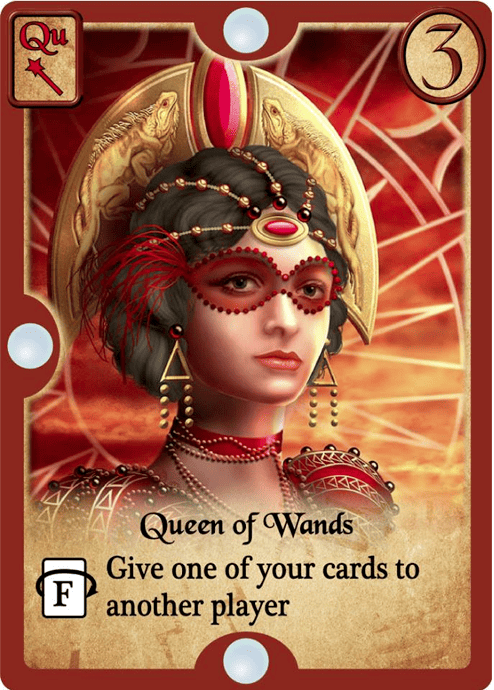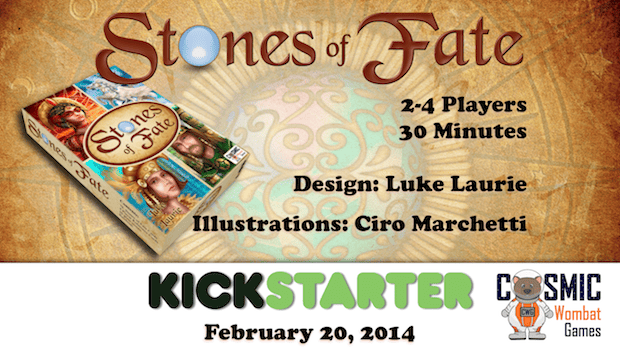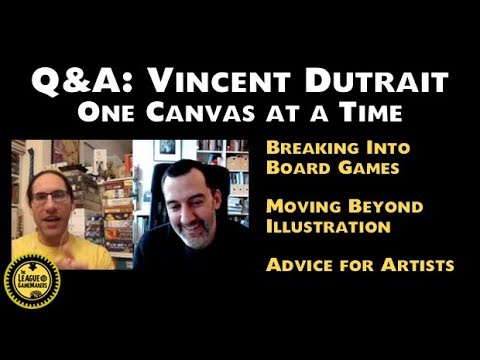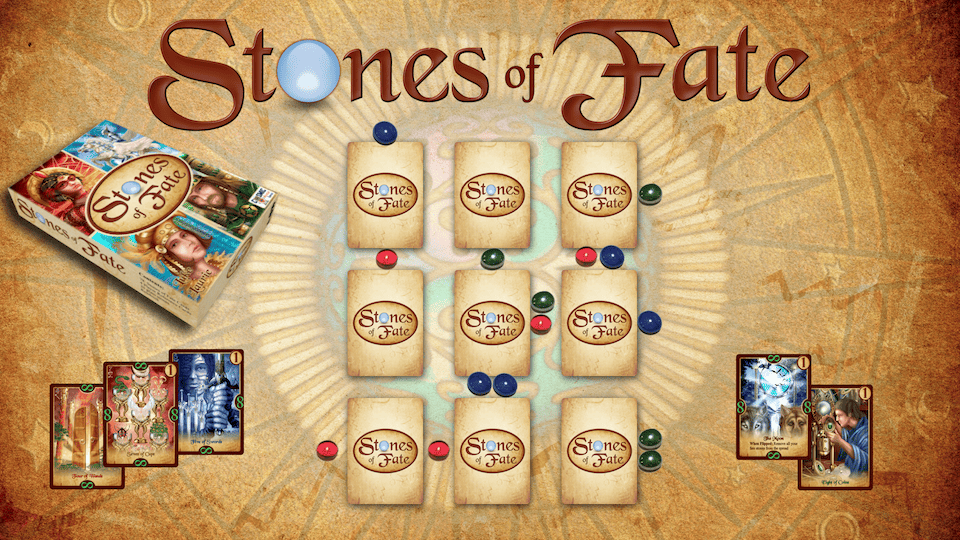
ABOUT STONES OF FATE
Stones of Fate is a fast-paced memory and area-control game for 2-4 players. In the game, players put “Fate Stones” next to face-down Tarot-themed cards. Players often remark that the game mechanics feel unique and fresh, yet easy to grasp, so I’ve been asked many times how I came up with the design. In this post I discuss how Stones of Fate first came into existence.
PRINCIPLES OF DESIGN FOR STONES OF FATE
While designing Stones of Fate, I had several priorities in mind about the type of game I wanted it to be. Most of these thoughts related pacing and preventing analysis paralysis. In a game where memory is involved, I want things to move along smoothly and swiftly.
Principles:
- Easy to learn
- Minimal setup
- No bookkeeping
- Unique theme
- Constant player interaction
- Players may choose their degree of risk
- Accessibility to all ages and skill levels
For more on game pace and designing, see my other posts on the League of Gamemakers: “Designing Games to Prevent Analysis Paralysis” – Part 1 and Part 2. Also, check out this great piece by Alex Harkey on the GamesPrecipice.com: Game Length & Maximizing Time Value.
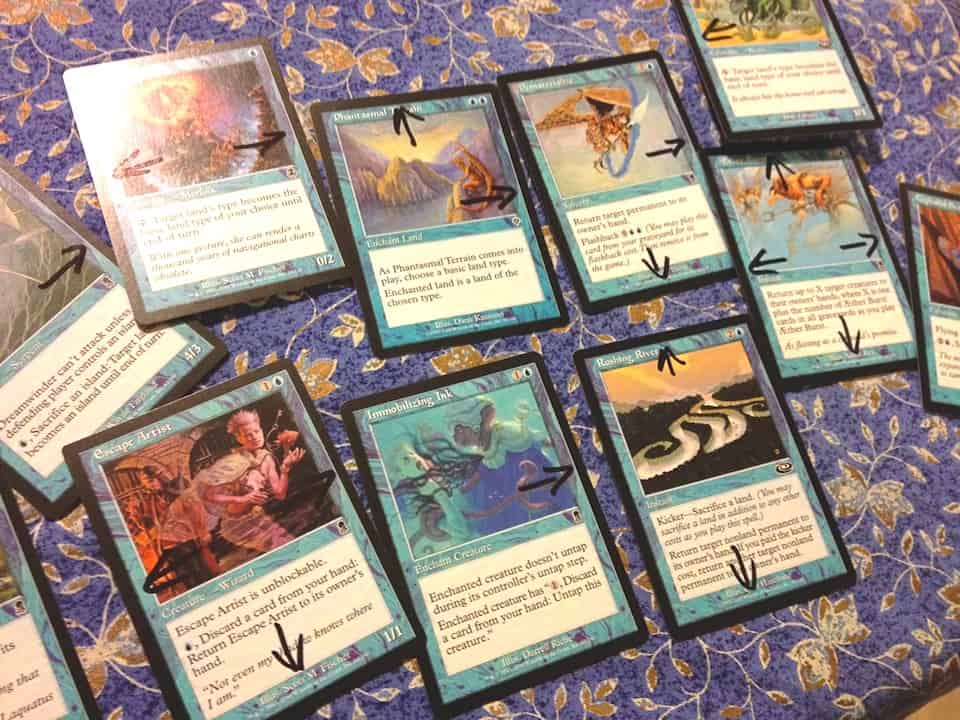
THE INCEPTION OF STONES OF FATE
The concept for Stones of Fate came to me suddenly on a cold Winter morning, near the end of 2011, while working on another game, “Age of Prophecy”. I was experimenting with a mechanic where the location of the playing pieces along the different sides of “Fate cards” would have different effects on the game. This was so cool by itself that i realized it should really be a game of its own. I grabbed some Magic cards and a Sharpie. This was the birth of a new game!
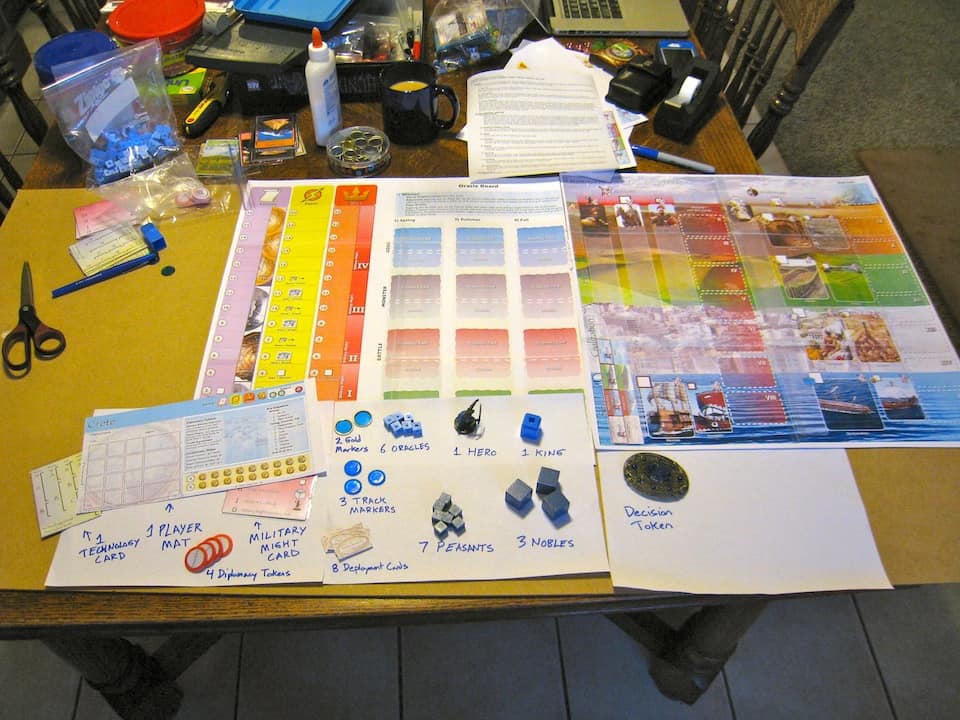
STONES OF FATE WAS BORN OUT OF MECHANICS DEVELOPED FOR ANOTHER GAME I WAS WORKING ON, A MUCH HEAVIER, MORE COMPLICATED GAME.
Within 20 minutes of building my first prototype, I was playing Stones of Fate with my family and some close friends (including Jeff Cornelius of Cosmic Wombat Games – who would go on to publish Stones of Fate!). I used Magic cards with arrows drawn on the edges. We took turns peeking at face down cards, placing colored glass stones beside and between the cards, and flipping cards over to see which players would win the cards. The player with the most Stones next to an arrow would win a card when it was flipped.

IT WAS FUN. IT WAS QUICK. IT WAS EASY TO LEARN. WE WERE LAUGHING AND HAVING A GOOD TIME. KIDS COULD DO IT. IT FELT LIKE PLAY.
FIRST PROTOTYPE
The beauty of the fundamental concept of Stones of Fate is that each time a player chooses to flip a card, the planning of multiple players is revealed. Flipping cards creates a “fiero” moment of excitement and surprise. In Stones of Fate, sometimes, you flip a card and you win it. Sometimes you flip a card, and another player wins it. Sometimes, you flip a card and shift the game using card abilities.
In the original prototype each player had a separate piece called an “Arcana Stone.” The arcana stone was placed on top of one card to prevent other players from peeking at that card. After vigorous playtesting, I decided that this mechanic slowed the game down and created more difficult strategic strategic choices. This didn’t fit my concept for the base game, but has become a great variant that is included with the variants available through the Stones of Fate Kickstarter.
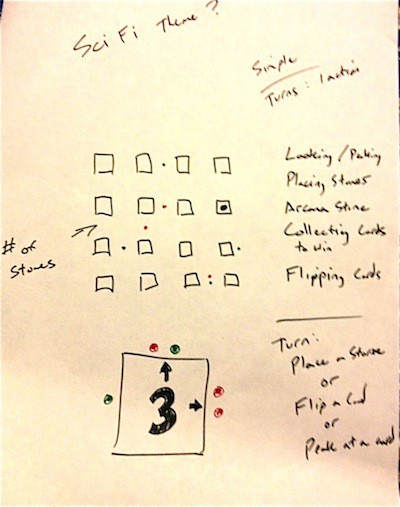
THE TAROT THEME
I settled on the Tarot theme very quickly, within about two weeks of the initial concept. I am a fan of themes that are novel or underused, and the Tarot offered a wealth of symbolism on which to build my game. I researched Tarot card meanings and matched abilities and values to the cards. I toyed with several names for the game: Tarot Stones, Stones of the Tarot, Fate Stones, Stones of Destiny, Stones of Fortune and Stones of Fate. I began building cards using the art from the Rider-Waite Tarot deck. Below you can see three generations of Stones of Fate cards.

For more on how the meanings of Tarot cards influenced the mechanics of Stones of Fate, see this piece over on Boardgamegeek.com.
THE POLYPRIZE
With the game feeling nearly complete, using a laser-printed prototype, I entered the Polycon game design contest, the Polyprize. In June of 2012, I was awarded the first place prize at the annual Polycon game convention in San Luis Obispo, one of the longest running game conventions around. I was really excited to meet people who had played my game and loved it, even in its early stages. I even signed a few copies for my new fans!
Winning the Polyprize felt like a real affirmation that Stones of Fate had potential to become a successful game. The prize came with a mission: to use the funds to work towards publishing the game.
LEARNING THE BIZ
At Polycon, I had a chance to sit down with veteran game designer Tom Jolly, famous for games such as WizWar, Drakon, and Camelot. Tom taught me about many of the challenges of being a designer, getting the attention of publishers, and things to be cautious about. My conversations with Tom convinced me that I needed to make my first pilgrimage to Gencon to get a feel for what the bigger industry is like.
Gencon, of course, was a life-changing experience. I was able to attend workshops, meet many people, play tons of games, and get a feel for just how vast and diverse the gaming community is. One particularly useful talk I attended featured James Earnest (Volatility in Game Design), who discussed the nature and necessity of volatility and chance in game design. I came home from Gencon invigorated and convinced that designing games was something I would commit to, and Stones of Fate would be my first game.
Shortly after, Jeff and Nathan Cornelius founded Cosmic Wombat Games, and committed to publishing Stones of Fate, and the story goes on. Cosmic Wombat Games has continued to develop and improve Stones of Fate, and has done a fantastic job integrating the artwork of award-winning artist Ciro Marchetti.

